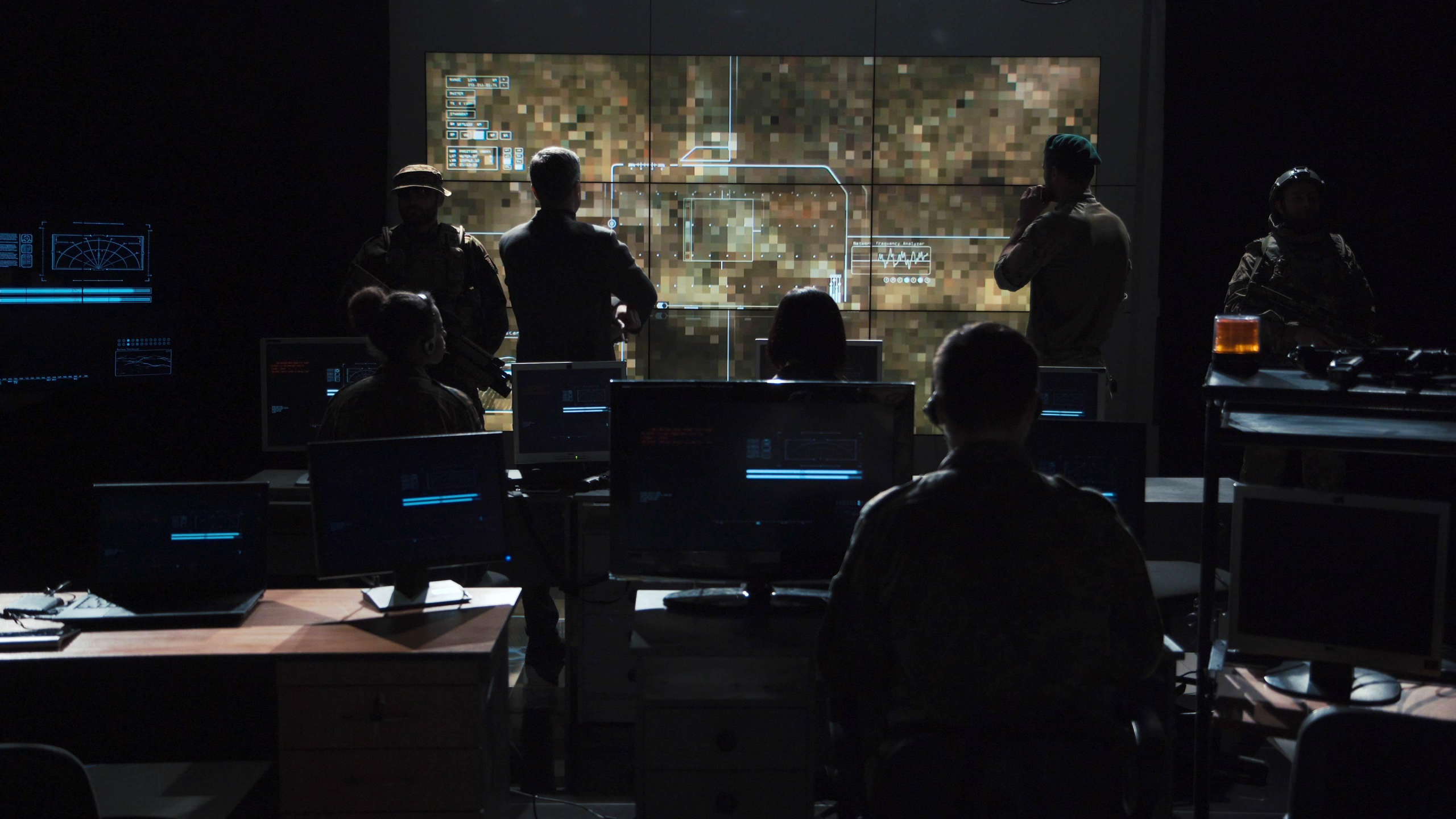U.S. Critical And Emerging Technology List Forecasts Future Military Needs – Forbes
The development of military technology is essentially a cat-and-mouse game, where a country must constantly develop new technologies to stay ahead of its adversaries. Part of this game involves forecasting out future needs and determining the underlying technologies. As such, the U.S. National Science and Technology Council published its set of Critical and Emerging Technologies (CETs) on Tuesday, which highlights the technology areas that are perceived as being key for U.S. national defense. This list serves as guidance for defense research, development, and acquisition efforts and prioritization.
PHILIPPINE SEA – JUNE 18: In this handout provided by the U.S. Navy, a combined formation of … [+] aircraft from Carrier Air Wing (CVW) 5 and Carrier Air Wing (CVW) 9 pass in formation above the Nimitz-class aircraft carrier USS John C. Stennis (CVN 74). The formation included F/A-18 Hornets from the Black Aces of Strike Fighter Squadron (VFA) 41, the Diamondbacks of Strike Fighter Squadron (VFA) 102, the Eagles of Strike Fighter Squadron (VFA) 115, the Royal Maces of Strike Fighter Squadron (VFA) 27, the Vigilantes of Strike Fighter Squadron (VFA) 151, and the Warhawks of Strike Fighter Squadron (VFA) 97. The Nimitz-class aircraft carriers USS John C. Stennis and USS Ronald Reagan (CVN 76) are conducting dual aircraft carrier strike group operations in the U.S. 7th Fleet area of operations in support of security and stability in the Indo-Asia-Pacific. (Photo by Lt. Steve Smith/U.S. Navy via Getty Images)
The CET list includes fourteen technical areas from previous lists and five new technical areas. The lists of continuing technologies include advanced computing, advanced engineering materials, advanced gas turbine engine technologies, advanced manufacturing, advanced and networked sensing and signature management, artificial intelligence, autonomous systems and robotics, biotechnologies, communication and networking technologies, human-machine interfaces, networked sensors and sensing, quantum information technologies, semiconductors and microelectronics, and space technologies and systems. These technology areas relate to current weapon systems and existing modernization efforts, encompassing a range of capabilities from aircraft to cyber warfare to autonomous systems. Furthermore , many of the research and development efforts from the National Defense Authorization Act aligned with these areas.
The five new technology areas in the CET list are hypersonics, directed energy, renewable energy generation and storage, nuclear energy, and financial technologies. These additions are not surprising, given recent military developments. Indeed, the U.S. military has numerous efforts tied to each of these areas; however, by adding these technology areas to the CET list, the Department of Defense is elevating their importance. Further, the inclusion of these technology areas provides insight into the capabilities that the U.S. military forecasts as needing in future wars.
FILE – Chinese military vehicles carrying DF-17 roll during a parade to commemorate the 70th … [+] anniversary of the founding of Communist China in Beijing, Tuesday, Oct. 1, 2019. U.S. Defense Secretary Lloyd Austin said Thursday, Dec. 2, 2021, that China’s pursuit of hypersonic weapons “increases tensions in the region” and vowed the U.S. would maintain its capability to deter potential threats posed by China. (AP Photo/Ng Han Guan, File)
The first new technology included in the CET is hypersonic weapons, a field that has seen significant growth and investment over the past year. Hypersonic weapons can achieve speeds in excess of 10,000 mph, while still maneuvering at low altitudes. The combination of speed and maneuverability makes hypersonic weapons difficult to track, and there are currently no systems to counter them. China and Russia have already developed hypersonic weapons, and most other countries, including the U.S., are investing heavily in developing their own offensive and defensive capabilities. Last week, the Pentagon met with executives from the defense industry to stress the urgency of hypersonic weapons.
The CET also added directed energy weapons, which includes lasers, high-power microwaves, and particle beams. Directed energy weapons are powerful, fast, and accurate, while also being able to operate over a substantial range. Many potential applications include using space-based directed energy systems, allowing a military to destroy targets anywhere in the world. Furthermore, a recent study by the Air Force indicated that directed energy weapons will play a key role in combating new technologies entering the battlefield, including hypersonic weapons and drone swarms.
Soldiers in a US Army assault vehicle (R) wait, 05 July 2003, as they prepare to escort a convoy of … [+] propane gas, oil and gasoline tanker trucks south on the highway to Baghdad from Tikrit. AFP PHOTO/Stan HONDA (Photo credit should read STAN HONDA/AFP via Getty Images)
The third new CET is renewable energy generation and storage. The Achilles heel of modern militaries is their reliance on fuels. For example, during the Global War on Terror, fuel convoys were a common target; these convoys would likely make for an attractive target in future wars. This technology area focuses on both reducing fuel consumption and identifying replacements for fuel. One attractive option is “edge-sustainment” where energy is harvested from local sources. This includes renewable energy, such as solar, as well as producing biofuels from locally procured organic material.
Tied into the need for renewable energy is the fourth new CET — nuclear energy. The U.S. Navy already uses nuclear power for its aircraft carriers and submarines, so advances in nuclear energy would enhance the fleet capabilities. Furthermore, the Department of Defense has an initiative called Project Pele, which seeks to develop small, portable nuclear power systems capable of powering a forward operating base. Overall, nuclear power provides an opportunity to reduce supply lines while providing troops with continuous, reliable power.
TOPSHOT – A technician inspects the backside of bitcoin mining at Bitfarms in Saint Hyacinthe, … [+] Quebec on March 19, 2018. – Bitcoin is a cryptocurrency and worldwide payment system. It is the first decentralized digital currency, as the system works based on the blockchain technology without a central bank or single administrator. (Photo by Lars Hagberg / AFP) (Photo by LARS HAGBERG/AFP via Getty Images)
The first four new CETs are in line with recent military investments. However, the fifth new CET, financial technology, is not. The National Science and Technology Council specifies that this technology area consists of distributed ledger technologies, digital assets, digital payment technologies, and digital identity infrastructure. The inclusion of this technology area is likely due to the expectation that future wars will be multi-domain, including the financial domain. As such, a military could try to disrupt another country’s economy through financial technology. Meanwhile, the country must safeguard its own economy from such an attack. Moreover, digital currency is an enabler for terrorist groups, so denying them access to funds would limit their capabilities.
These five diverse technology areas align with the move by the U.S. military to “multi-domain operations” where they are expected to fight battles across multiple domains. Hypersonic weapons and directed energy weapons are intended to be strategic assets that provide standoff from the enemy. Meanwhile, addressing energy challenges is key for conventional warfare including providing power to aircrafts, ships, and “boots on the ground.” Meanwhile financial technology is a new domain that could play a major role in future wars.
Inherently, as time progresses, war gets more complex, as does the underlying technology. The new set of CETs released by the National Science and Technology Council should pose the U.S. military to be ready for this complex battlefield.




